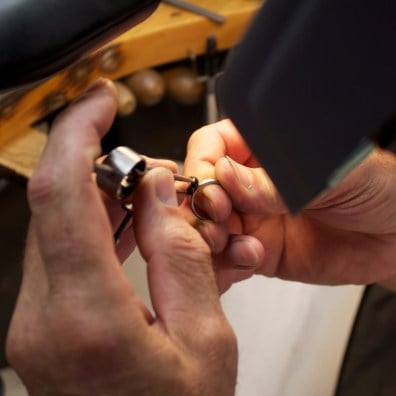Spending my time sitting at a bench making jewellery is what I love. Almost everything I produce starts as a piece of 6mm square wire, in Platinum or 18ct gold.
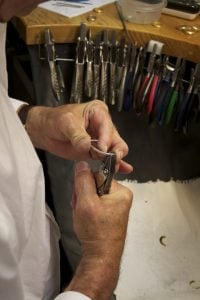
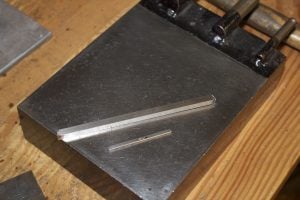
The advantages of truly handmade jewellery
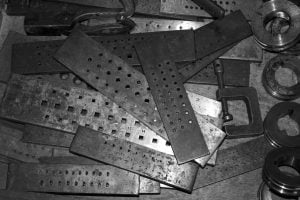
Most jewellery produced today isn’t made this way, most jewellery is cast. Casting is a process whereby a mould is made in the shape of the piece of jewellery or whatever is being cast. To put it simply (and the process is far more complex), metal is then poured into the mould, which then hardens and the cast is produced. This process is similar to making jelly, and multiple casts are done at once on a “tree”, as shown below:

The moulds or waxes are often produced by a computer using CAD, and increasingly it seems 3D printers are being used.
Traditional hand fabrication means forging each piece by hand, without the use of CAD software, wax models or casting or prefabricated pieces of any kind. It is the rarest type of jewellery construction nowadays. It means taking a raw piece of cold-rolled metal wire, bar or sheet of precious metal, such as Platinum or Gold, and then through a process of cutting, hammering, shaping and annealing (heating), the metal is shaped into the desired design. It is this process of heating and annealing that hardens the metal which the casting process skips, making handmade jewellery almost 50% harder than cast jewellery. In practical terms, this means that diamonds and gemstones are far less likely to fall out compared to cheaper cast settings. Porosity in cast jewellery weakens the basic structure of the piece, causing ring shanks to break, prongs to break off and galleries to crack, thus stones fall out.
Too often the term handmade is misused and exploited, mass-produced cast components bought from catalogues are soldered together and described as bespoke!
True handmaking of jewellery is a dying art because it takes the most skill and time, yet it yields the highest quality of finish possible. It will result in a true heirloom piece that will last for generations. The difference is obvious to expert and discerning buyers, over time the difference in durability and wearability becomes obvious to the owner too. David Ashton jewellery is a bench made entirely by hand.
If you want a piece of jewellery that will last you a lifetime, you want something that was made by hand.
Due to the level of expertise and skill required for true precision hand fabrication, most of the mass-produced designer engagement rings you will see are not going to be made this way. David Ashton focuses on creating the perfect and most practical setting without sacrificing style, keeping the focus on the diamond, sapphire or ruby itself, which is after all the main focus of any stone set ring.
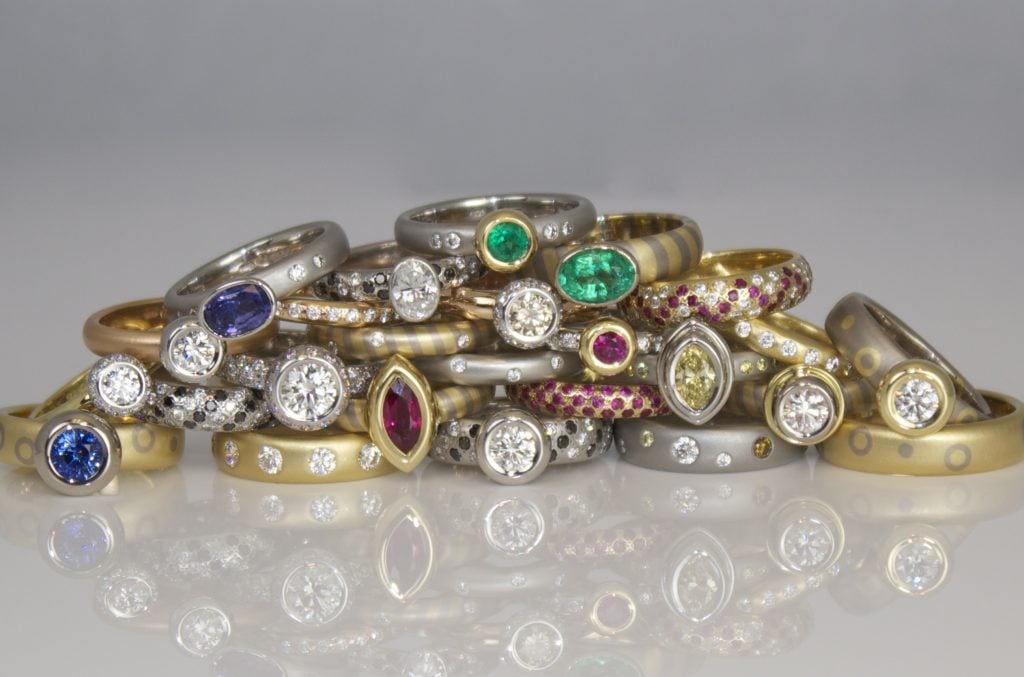
Save
Save
